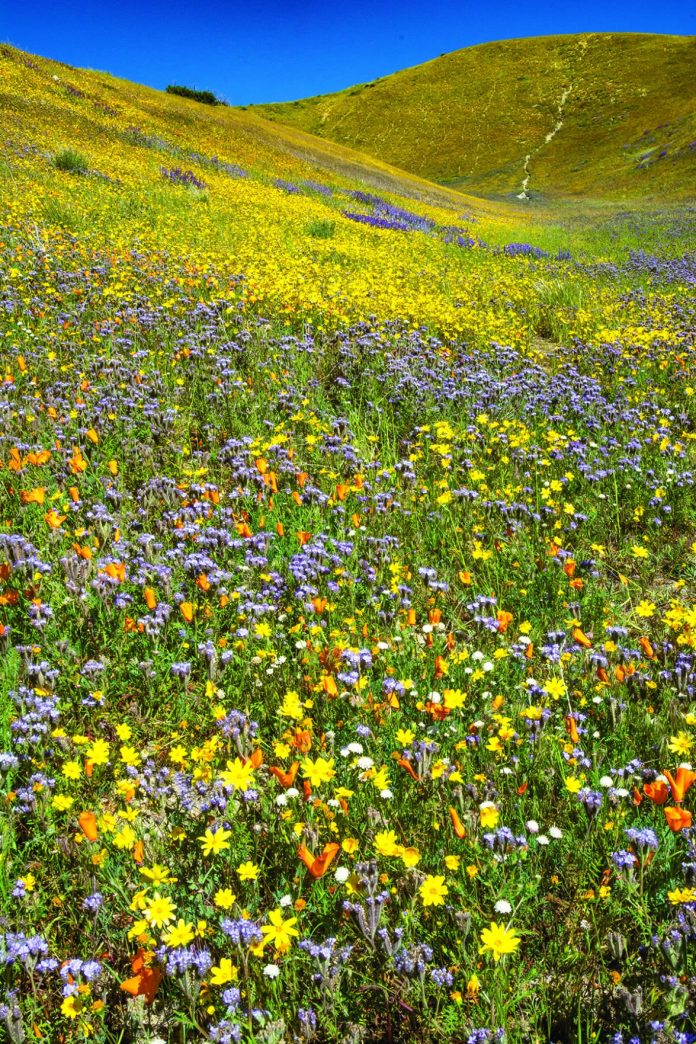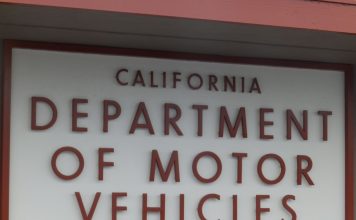
I have always been truly amazed at the tenacity and patience of wildflowers. Seeds sit on hot bone-dry ground year after desiccating year, all the while remaining viable, waiting for the right moment. “No, not this spring,” says the seed. “I’ll never be able to sprout, create a flower, and most important, produce mature seeds on that paltry rainfall. I think I’ll wait.”
A case in point: After the 2007 Lick Fire in Henry Coe State Park, whispering bells, a flower not seen in the park for decades, bloomed in profusion. You have to respect that.
So, I looked forward to our much-ballyhooed El Niño winter with anticipation. I was not rooting for power outages or natural disasters. I simply longed for a very wet winter that would awaken the accumulated wildflower seeds waiting for the right time. But the biblical deluges never came. According to the rain records I consulted, we pretty much received normal rainfall throughout the state.
To complicate matters, California’s winter rainfall was uneven. Most locations in Northern and Central California received above-average rainfall while Southern California totals were far below the yearly average. So, some areas bloomed gaudy while others sat quietly waiting out another year of drought. Perhaps you have read about or seen pictures of the spectacular “super bloom” in Death Valley (120 percent of normal), but when I went by the Antelope Poppy Preserve near Lancaster (57 percent of normal), I saw nary a poppy.
Still, it rained more this past winter than it had in the previous four, so I lit out to take a look. Not sure what I would find or where, I hopped in the car and headed south to investigate the usual suspects.
Carrizo Plain National Monument is a wide valley in the Coast Range west of the Buttonwillow area just before Interstate 5 climbs the Grapevine. It is the last remaining native grassland in California, resembling the Central Valley before it was tamed. There are many natural history reasons to visit the Carrizo Plain, but most people come for the flowers, which are lovely any year, but spectacular in wet ones. Along Soda Lake Road, the road that bisects the length of the plain, there were impressive seas of yellow coreopsis and blue phacelia. Lovely indeed, but I had hoped to see the folds of the Tremblor Range cloaked in color. No luck. Push on.
A little research mixed with past experience set me on a course that began at Gorman, not much more than a truck stop on the Grapevine, then east along Highway 138 toward Lancaster and Palmdale. Side roads north and south of Highway 138 lead to some notable wildflower displays—sometimes. A favorite spot on Gorman Post Road had lovely displays of poppy, lupine, and blue phacelia that I reached after a short scramble up a steep sandy slope. Great for a snug photograph, but where is my sprawling hillside of color?
I finally found it hidden on Lake Elizabeth Road, a road that parallels Highway 138 behind the first fold of the San Gabriel Mountains. Across the street from the road’s namesake lake, an orgy of color carpeted the slope from my car door to the hilltop two hundred feet overhead. Blue phacelia, poppies, lupine, coreopsis, goldfields, and a beautiful evening primrose grew so closely together that I had to take each step carefully to prevent mass casualties. Truly, a show for the ages.
Some spring after a wet winter, consider a wildflower odyssey to the southland. On desertusa.com, follow the posts of other wildflower seekers for current information about what is blooming and where.












